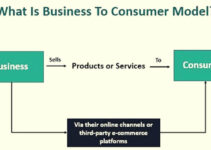Some brands are just as famous as those companies that develop them. For instance, a red and white-labeled bottle containing a black drink could be Coca-Cola. When you hear the phrase ‘you are not you when you’re hungry you would think of Snickers Bar. Today, we’ll discuss what is product branding strategy; its importance, how to build a product branding strategy, and examples.
What is Product Branding?
Product branding is the strategic process of integrating experience, message, and design that uniquely specifies a product and differentiates it from other products in the category. It comprises almost everything about the product like; the looks and feel of the product packaging, how it is delivered, the material made from, and the visual design of the product.
Everything you see ranging from household cleaners to candy cars follows its own marketing strategy and brand positioning. It doesn’t matter whatever your products; the concept remains the same and that is to differentiate your products from the competitors.
Businesses and companies establish corporate brands to develop loyalty with their target customer market. Products could increase trust and sales by developing a specific brand. Your products are the brand extension of your company, if you do it right, it would amplify your company’s reputation.
Importance of Product Branding
Recognized products of the brand offer a lot of advantages to the company. Some of the main benefits of the product branding and the reasons for its importance are as follows;
Identification
It’s a type of brand marketing, and it makes it easier for the customers to recognize your product from other similar products. The more recognizable and differentiated your brand is, the company would generate higher revenue from its advertisement and promotions.
Let’s think about the last you visited the market and whether any specifically designed product with unique colors attracted your attention. It could be anything like peanut butter or skippy or turquoise, you would remember and locate such products regardless of the brand name.
Expansion
If you have got a well-known brand, then it becomes much easier for you to expand your market into new product categories. In fact, you can also launch a new brand from the same company. It has the capability to become credible to the customers instantly and encourage them to try your offers.
For instance, Dollar Shave Club began its business with two products shave butter and a razor. The company expanded its portfolio and added hair care in 2015. The company has already established a reputation as personal care brand before launching its new offer, and it allowed the company to expand its portfolio and earn credibility.
Products Preferences
The preferences of the customers highly depend on the brand awareness of the company’s products. People would purchase products from such brands that they can trust and are familiar with its name. When you develop such a brand that is consistent and intentional, and it targets the needs of your customer market, then it amplifies its probability of winning.
Competition
One of the main elements of brand strategy is to pay heed to the other competitors’ brands in the market. Strong and powerful brands discourage other businesses and companies to enter the market in your niche. They would put a lot of barriers for the potential competitors to enter the market especially if customers like your brand.
You won’t have to compete on the price if you do good marketing of your brand. People would be willing to pay high prices for the brand they like and admire. They’re reluctant to pay for such brands if it has a perception of lower quality.
How to Build Product Branding Strategy
The product branding comprises many elements like general messaging, brand story, brand value, brand voice, product description and name, package design, color, or logo. Some of the main tips on how to build a product branding strategy are as follows;
Researching Audience
The first step of every brand strategy starts with researching your target customer market. You should decide what type of customers would like to buy your products, and then develop a brand that connects with them. Some of the questions that you should keep in mind are as follows;
- Value of your offer to the customers
- Why you would like to serve your customers
- Customers would buy your product, and not the competitors; why?
- The users of your products
- Purpose of the product
The other important element of brand development is to be familiar with consumer insight. It’s because it allows you to put yourself in the shoes of your customers that why they would buy your products. Accessing customers’ data would help you to address the pain points and concerns with your products.
Knowing Competition
The thing about a good brand strategy is to stand out from the crowd of competitors. In order to do this, you should know the other competitors that are working to become visible. It would require you a lot of market research, on how your customers feel about those brands, and what motivates them to switch to theirs. It’s a very important building block.
Product’s Personality
You should imagine if your brand could speak; what it would say, how it sounds; feel, or smell like. The word brand is a combination of association, textures, smells, sounds, and visuals. You should make informed choices in terms of packaging, colors, and logo when you’re defining the personality of your brand.
Brand Identity
After understanding how your brand would look and function, you should start sharing your brand identity with your target customers. Your target customers would connect with your brand if they’re familiar with it. It offers customers a reason to choose your brand over competitors.
Be Consistent
It doesn’t matter whatever product brand strategy you follow, you should always try to be consistent with your approach. You should create a detailed list of how you’re going to present your brand in terms of imagery, values, brand voice, color palette, placement, and size. In short, your style should remain consistent both online and offline.
Examples of Product Branding
Apple
Apple is a leading example of product branding. However, Apple has got a lot of advantages in terms of the sexy and sleek corporate brand, but the company has also maintained its image in all of its product categories. Some of its leading product brands are iPod, iMac, iPhone, etc.
Shark Ninja
Shark ninja offers strong home solutions in the form of kitchen items. The company has earned the reputation of a premium brand by leveraging a multi-brand strategy. However, the company offers a wide range of brand products under the names of shark or ninja with longevity, power, or durability.
Conclusion: What is Product Branding? Importance, Strategy, Examples
After an in-depth study of what is product branding; its importance, examples, and how to build its strategy; we have realized that products brand has become very important in the competitive business environment. If you’re planning to build it, then you should follow and practice the abovementioned tips and guidelines.

Ahsan Ali Shaw is an accomplished Business Writer, Analyst, and Public Speaker. Other than that, he’s a fun loving person.


